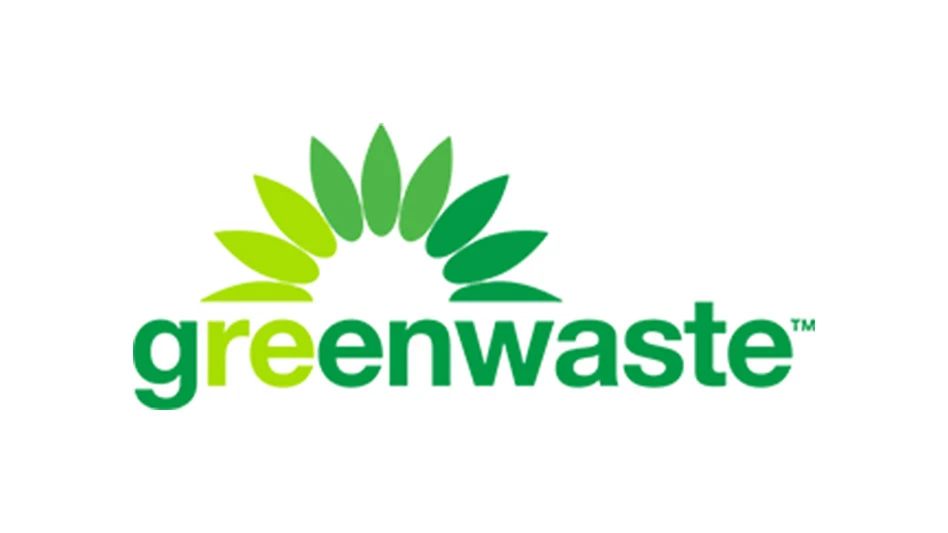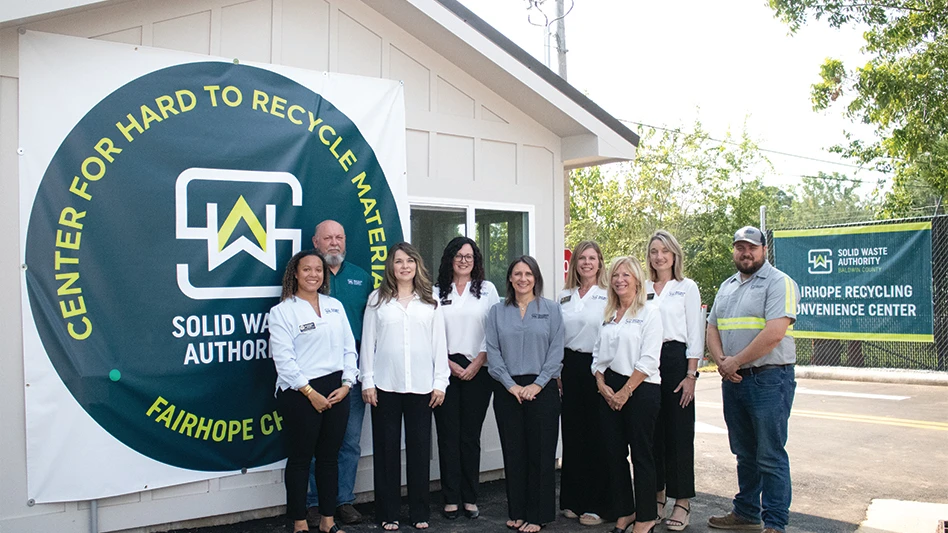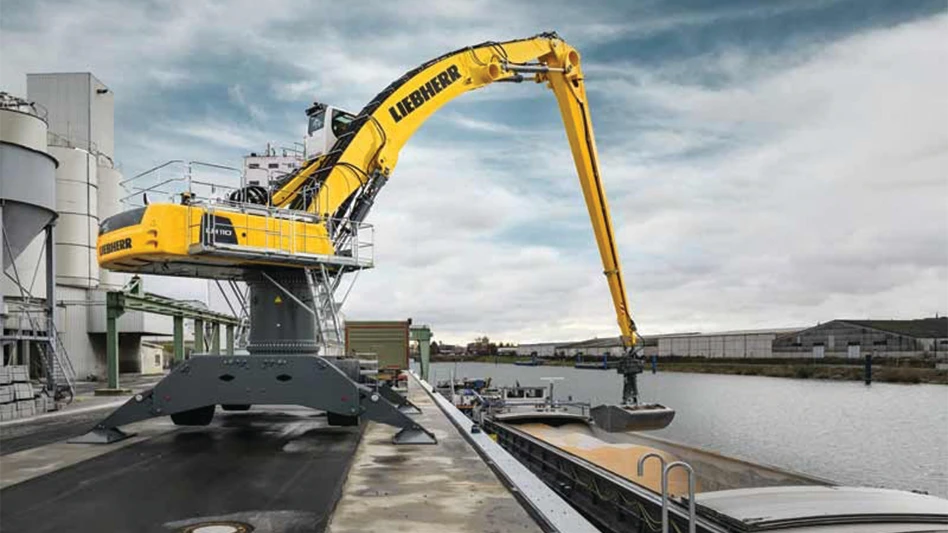
Unpredictability has been a common theme this year when considering supply and demand for recyclables, including old corrugated containers (OCC). Many packaging industry analysts as well as recyclers and mill operators say the COVID-19 pandemic has made it much tougher to predict what could happen with OCC markets even a few weeks out.
Adam Josephson, director and equity research analyst at Cleveland-based KeyBanc Capital Markets Inc., says this year’s recession that resulted from lockdowns intended to slow the spread of the coronavirus has behaved differently than most.
“Normally in a recession, box demand gets hit hard,” he says. “This time, box demand surged at the onset of the recession because of panic buying, plummeted as the economy shut down and has surged once again from June onward as the economy rapidly reopened and as massive government stimulus payments propped up consumer spending. No industry observers predicted this sequence of events. Given these factors, this recession isn’t comparable to any of those that have preceded it. Consequently, I don’t believe there are any lessons to be drawn from this experience. In other words, I don’t think what’s transpired this year is a guide to what’s likely to happen next year and beyond.”
Josephson references the latest earnings reports from containerboard producers WestRock and Packaging Corp. of America, saying, “Neither company was willing to provide formal guidance in the last two quarters. They said, ‘We just don’t know’” what the upcoming financial quarters will bring.
Despite erratic market conditions, pricing and demand for OCC generally have improved compared with 2019, when the average U.S. price ranged from $20 to $25 per ton; export prices and demand weren’t much better. Pricing and demand began to improve at the start of 2020, but OCC markets became unpredictable in March, April and May as pandemic-related panic buying pushed the average U.S. price above $100 per ton.
A midsized independent recycler in the South says the supply of OCC was down in the spring because of less commercial generation of that material, yet paper mills demanded just about any recovered paper they could get to keep up with the panic buying.
“We saw a tremendous spike in demand in March, April and even May, which has subsided to some degree, but that was just exacerbated by the fact that mills were running as hard as they possibly could, but there wasn’t enough supply. There wasn’t enough corrugated in the market,” the recycler in the South says.
Export pricing for double-sorted OCC, or No. 12 according to the Institute of Scrap Recycling Industries (ISRI) specification, has continued to rise throughout the summer and the start of fall. The gains in pricing are in response to Chinese mills making their final push to import recovered paper before import quotas run out at the end of the year. Even export prices for OCC No. 11 have been strong as a result of China’s impact on the market.
Yet, domestic OCC prices and demand cooled off a little by June and July, dropping to about $60 per ton on average. Since then, recyclers and mill operators say domestic OCC pricing and demand seem to have stabilized somewhat.
Marty Rusk, vice president of recycling operations at Smurfit Kappa North America who is based in Texas, says the domestic market for OCC cooled down a bit by July and August. However, he adds, movement of OCC appears to be steadier, and mill buying has calmed down from the panic buying in spring. Smurfit Kappa North America’s recycling centers and a brokerage office are based primarily in the South.
“Corrugated is stable now; it’s moving,” Rusk says, adding that the spike in demand for double-sorted OCC in China also has helped stabilize domestic markets for OCC No. 11. “It’s helped the market; it’s in balance. We’re forecasting stable as what we can see in today’s world. We don’t want to see the prices pound down, but we also don’t want it to shoot up.”
Last-ditch effort
In July, China reaffirmed its plans to stop importing materials it considers “solid wastes,” including recovered paper, in 2021. According to a report from the Bureau of International Recycling (BIR), Brussels, China’s Ministry of Ecology and Environment (MEE) will no longer accept and approve import applications for “solid waste” starting next year. The MEE considers the new regulations to be “in line with the policies applied since 2017 to reduce the import of ‘foreign waste.’”
As a result, Chinese companies are making somewhat of a last-ditch effort to import recovered paper, and more specifically U.S. double-sorted OCC. The average price of double-sorted OCC for export to China is between $167 and $185 per ton in the September buying period, according to Fastmarkets RISI’s PPI Pulp & Paper Week Report Sept. 4.
“[OCC] No. 12 prices are going up, up, up,” a broker on the West Coast says, “which leads to the question: What will happen when China quits buying [recovered paper]? There’s real mixed opinions about that.”
Many recyclers, brokers and domestic mill operators are wondering what Chinese companies are going to do next year when they will no longer be allowed to import recovered paper, particularly as China will still be a large producer of containerboard and boxes. The broker on the West Coast adds that some people in the recycling industry are concerned that there will be a sudden glut of OCC that needs to find a home at the end of the year as soon as China backs out of the market. He says other industry professionals are hoping consumers in the U.S. and other countries will buy some of the extra OCC next year.
“I believe there’s still going to be demand in China as we’re slowly coming out of COVID and manufacturing is picking up,” he says. “It’s picking up in the U.S. and elsewhere. Just because China is going to quit buying OCC doesn’t mean there’s suddenly not going to be demand. They will still need linerboard and medium to make boxes. They can either import it … and there’s also going to be demand for unbleached pulp to make liner and medium within China.”
Dan Gee, president of Recovered Paper Consulting LLC, Richmond, California, and a senior associate at Atlanta-based Moore & Associates, says OCC markets could correct temporarily when China stops importing recovered paper in 2021. “There is a concern that after the China demand ends—after October—this may cause a short-term OCC market correction, reducing prices,” Gee says. “[Double-sorted] OCC No. 12 premiums will come back down to normal ranges.”
But he adds that U.S. demand for OCC, as well as demand in India and Southeast Asia, will continue despite China’s exit.
Some hope remains in the industry that OCC pricing and demand won’t fall too sharply at the end of this year and into next year as new end markets and the gradual weaning off of China have been occurring for a few years now.
“I don’t consider China to be the market player they used to be,” Joe Benedetto, president of Recycling & Disposal Solutions, Portsmouth, Virginia, says. “Assuming they drop off completely, I don’t think it will have a major effect. We’ve gone through the last two years with China cutting back or dropping off. We’ve gone through our pain. We as an industry have adapted to less demand from China. I remain optimistic that China completely out of the market won’t have a major impact. I remain optimistic that China completely out of the market won’t have a major impact.”
Demand outside of China
Outside of China, demand for OCC has been relatively steady as of mid-September. India as well as Southeast Asia—including Indonesia, South Korea, Taiwan, Thailand and Vietnam—are continuing to purchase more OCC, Gee says.
“OCC demand is driven by a combination of containerboard and new recycled pulp production,” he says of export markets.
Joel Litman, president and co-owner of Texas Recycling, Dallas, says steady demand is coming from Mexico as well. “There are a couple of mills opening up there that will be looking for corrugated,” he says, referencing Grupo Gondi’s paper mill that is expected to open this year in Monterrey, Mexico.
Overall, domestic markets for OCC appear to be stable. A national mill operator notes that domestic demand for OCC is healthy heading into the fall season. He says mills took some downtime at the start of summer after the rush of panic buying quieted down, but he adds that most domestic mills are back to normal now.
“All of our containerboard mills are running. They have good order books” and no anticipation of market-related downtime, the mill operator says.
Although hurricanes have affected mills in coastal regions, the recycler in the South says domestic mills he works with have continued to operate through those conditions. “Even with the hurricanes in the South, we’ve not seen any lowering of demand,” he says.
Optimistic outlooks
New domestic capacity to consume OCC is also on the horizon. Gee says International Paper, which is headquartered in Memphis, Tennessee, will be adding capacity to consume OCC in Selma, Alabama, this fall, and Green Bay Packaging will have new OCC capacity by the end of the year in Green Bay, Wisconsin. He says more ongoing capacity expansion projects have been announced by Oakbrook Terrace, Illinois-based ND Paper, a wholly owned subsidiary of China’s Nine Dragons Paper (Holdings) Ltd.; Shanghai-based Shanying International Holdings Co. Ltd.’s mill in Wickliffe, Kentucky; and Kingsey Falls, Quebec-based Cascades’ Ashland, Virginia, mill.
Josephson says much of the new paper mill capacity being added in the U.S. is of the “recycled variety.”
“OCC demand is driven by a combination of containerboard and new recycled pulp production.” – Dan Gee, president, Recovered Paper Consulting LLC
He says, “Last year, Pratt Industries built a recycled mill in Ohio. Nine Dragons has converted a machine in Wisconsin to recycled containerboard. McKinley Paper in Washington has completed a conversion to recycled containerboard. And next year, Green Bay Packaging will start up a big mill in Green Bay that’s recycled.”
Josephson adds that some capacity additions have been delayed for a variety of reasons, including labor issues, demand issues and COVID-19, but says he expects these projects to be completed.
Overall, recyclers say the pandemic has affected OCC generation and demand in somewhat of a good way. Although commercial generation has gone down this year, much more of this material is coming in through residential recycling streams with e-commerce buying on the rise.
Josephson reports that box demand was up 1 percent in the first half of the year, which was unusual for a recession, and that the recent demand improvement has had a modestly positive impact on OCC prices.
However, he adds, what 2021 will bring for box demand as well as for OCC prices is uncertain. “Without knowing what will happen to COVID cases and what stimulus packages will be, it’s difficult to forecast 2021 box demand. There are critical factors that are highly uncertain.”

Explore the October 2020 Issue
Check out more from this issue and find your next story to read.
Latest from Recycling Today
- Dow, Mura Technology cancel chemical recycling plant in Germany
- Brightmark, Lewis Salvage partnership processes 1M pounds of medical plastics
- US paper recycling rate, exports down in '24
- Century Aluminum to restart idled production at South Carolina smelter
- Teaching kids the value of recycling
- ELV Select Equipment, Reworld aid NYPD in secure firearm disposal
- Some observers fear plastics treaty talks veering off course
- Advanced Polymer Recycling acquires TKO Polymers





